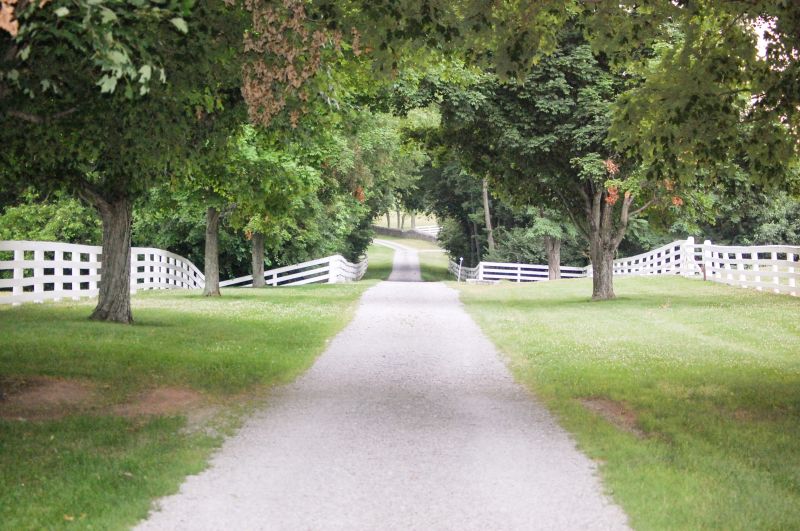Favorite Products For Restoring and Maintaining Private Road Surfaces
Explore trusted options that help you achieve smooth, safe, and durable private roads with minimal effort.
 Restoring a private road involves a careful selection of products designed to improve durability, safety, and longevity. Whether repairing existing pavement or constructing a new surface, a variety of materials and tools are essential for achieving a smooth, stable, and lasting roadway. From foundational layers to surface treatments, each component plays a crucial role in the overall quality of the restoration project.
Restoring a private road involves a careful selection of products designed to improve durability, safety, and longevity. Whether repairing existing pavement or constructing a new surface, a variety of materials and tools are essential for achieving a smooth, stable, and lasting roadway. From foundational layers to surface treatments, each component plays a crucial role in the overall quality of the restoration project.
Top Overall Option
Comprehensive Road Restoration Kit
A comprehensive kit that includes a variety of repair materials such as asphalt patches, sealants, and base layers, designed to address multiple aspects of private road restoration. It provides a versatile solution for both minor repairs and substantial resurfacing projects, offering durability and ease of use for property owners and contractors alike.
Types of Products For Private Road Restorations
Asphalt Cold Patch
Pre-mixed asphalt patches suitable for quick repairs of potholes and cracks, providing a temporary or semi-permanent fix.
Hot Mix Asphalt
A versatile asphalt material used for resurfacing and large repairs, offering a more permanent solution when properly applied.
Crack Sealant
Flexible sealants designed to fill and seal cracks, preventing water infiltration and further deterioration.
Base Layer Gravel
Aggregates used as a foundational layer to improve stability and drainage before paving or sealing.
Polymer-Modified Asphalt
Enhanced asphalt formulations that offer improved elasticity and resistance to temperature changes.
Bitumen Emulsion
A liquid binder used for surface sealing and tack coats, facilitating adhesion between layers.
Road Primer
Primers applied to prepare surfaces for sealing or paving, ensuring better adhesion.
Sealcoat Spray
Liquid coatings applied to protect the surface from water and UV damage, extending the lifespan of the road.
Surface Pavers
Interlocking pavers or slabs used for aesthetic and durable surface restoration.
Compactors and Rollers
Equipment used to compress and stabilize layers of asphalt or gravel during installation.
Drainage Solutions
Products such as drainage pipes and channels that help prevent water accumulation and erosion.
Edge Restraints
Materials used to maintain the integrity and shape of the road edges, preventing spreading and damage.
Erosion Control Products
Geotextiles, mats, and other materials designed to prevent soil erosion during and after restoration.
Surface Toppings
Additional layers like chip seal or overlay materials to enhance surface durability and appearance.
Traffic Marking Paint
Paints and tapes used for marking lanes, edges, and safety indicators on the restored road.
Popular Choices
Widely used for quick repairs of potholes and minor damage, suitable for various sizes of projects.
Effective for sealing cracks and preventing water intrusion, a common choice for ongoing maintenance.
A fundamental material for creating a stable foundation before paving or sealing.
Popular for surface protection, providing a glossy finish and helping to extend the surface lifespan.
Preferred for larger resurfacing projects, offering a durable and smooth surface when properly installed.
Used to prepare surfaces for sealing or paving, enhancing adhesion and longevity.
Interlocking paving options favored for aesthetic appeal and durability in private road restoration.
Key products for managing water flow and preventing erosion issues on private roads.
Used to stabilize soil and prevent erosion during and after restoration projects.
Essential for safety and navigation, applied to mark lanes and boundaries clearly.
The process typically begins with assessing the current condition of the road, identifying areas of damage such as potholes, cracks, or erosion. Proper preparation includes removing debris and loose material, followed by applying suitable base layers that provide stability and support. Surface sealing and finishing products are then used to create a durable, weather-resistant surface that can withstand traffic and environmental elements.
Choosing the right products depends on factors like the size of the project, expected traffic load, and local climate conditions. High-quality aggregates, asphalt mixes, sealants, and repair patches are common essentials. Additionally, equipment like compactors, sprayers, and applicators ensures proper installation and finishing. Investing in reliable products can help ensure the longevity and safety of the private road, reducing future maintenance needs and costs.
Key Buying Considerations
- Assess the current condition of the road to determine appropriate repair materials.
- Consider the expected traffic load and choose products rated for durability under such conditions.
- Evaluate climate factors such as temperature fluctuations and moisture levels that may impact material performance.
- Select compatible materials for seamless layering and adhesion during restoration.
- Determine the size and scope of the project to select suitable quantities and types of products.
- Prioritize products with clear application instructions and safety guidelines.
- Check for compatibility with existing pavement or surface materials to ensure effective bonding.
- Opt for products that facilitate proper drainage and erosion control to prolong road lifespan.
- Review product shelf life and storage requirements to maintain effectiveness over time.
- Factor in budget constraints while balancing quality and longevity of the repair solutions.
- Consider ease of application, especially if DIY restoration is planned.
- Look for products that offer flexibility to accommodate future repairs or modifications.
- Verify availability of technical support or customer service for troubleshooting and advice.
- Choose environmentally stable products that do not emit harmful fumes during application.
- Ensure compliance with local regulations and standards for road restoration materials.
